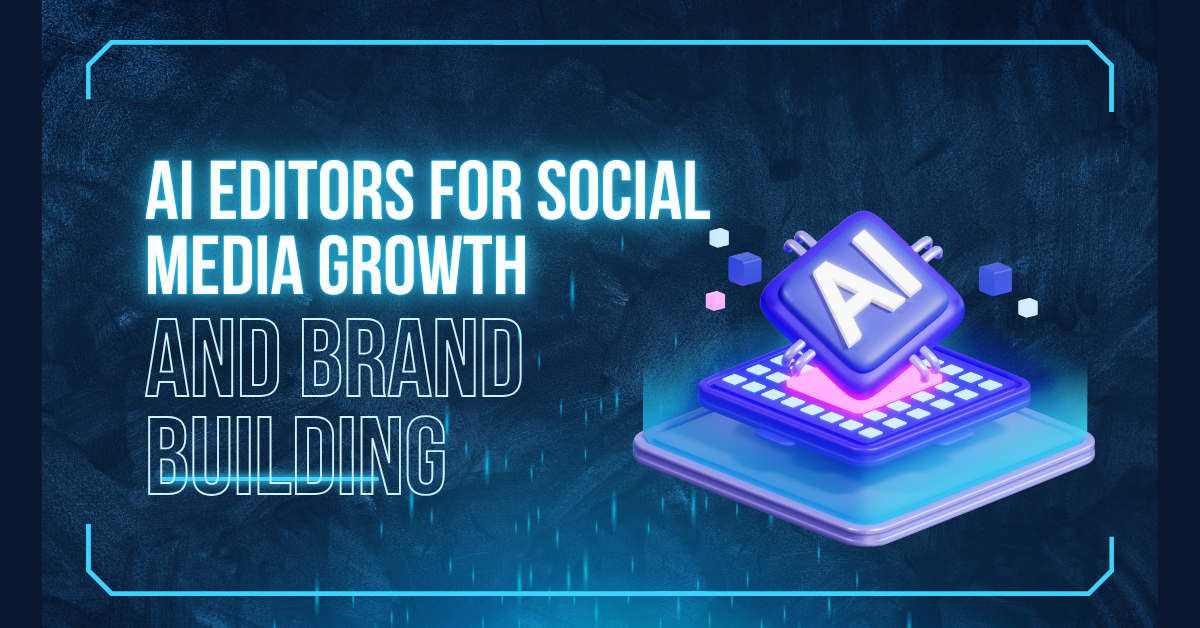Using AI Editors for Social Media Growth and Brand Building
The visual quality is the first thing that sparks users’ interest in the oversaturated world of social media. Knowing how to do social media marketing means creating visually appealing and consistent visuals to capture people’s attention and make brands stand out.
It can be extremely difficult to produce high-quality content without draining time or resources. But don’t worry; artificial intelligence (AI) offers you a helping hand. The algorithms streamline edits and automate complex design workflows. AI tools help maintain visual consistency, adapt content for different platforms, and support brand storytelling.
In this article, we explain how to use AI in social media to elevate your online presence. Follow these guidelines, and you will be able to work more efficiently. Craft a distinctive and convincing profile on social channels more intelligently and quickly than ever.
Why Visuals Matter in Brand Building
When users scroll through their feeds, images grab their attention up to ten times faster than text. They are easier to comprehend regardless of language. Pictures can transmit the brand’s ideas and values without pressuring the viewers into buying something.
One of the main social media branding tips is creating a recognizable visual identity. Colors, fonts, layout style, and imagery shape your business’s story. You tell this story to your followers, appealing to their emotions and establishing a connection. The right image can spark joy, urgency, curiosity, or aspiration. This emotional link often translates into engagement and conversions.
Speeding Up the Workflow
So, how is AI used in social media? The main task of the algorithms is to save time by automating and speeding up the tedious working routine. When speaking about AI-based photo editors, automate repetitive elements while designing. This sort of smart automation ensures visual uniformity. It is particularly useful in the same design but in a different format. Use AI-based software when it is necessary to create a portrait mode of the landscape picture for Instagram stories or a square version for Facebook.
Editors can use brand colors or lighten the composition to keep the mood consistent. They might also automatically eliminate the image background, correct the color, and substitute objects. Marketing teams can concentrate on the storytelling part. Some editors use generative AI and create new content variations based on a single image or brand color.
Reinforcing the Identity
Platforms like Luminar Neo provide AI-based tools like sky replacement or skin retouching. Luminar Neo reviews show that these tools learn from your editing style to offer more reasonable suggestions for further modifications. You can customize the program’s presets according to your brand’s identity and apply a set of adjustments to a pack of files with a single click. The software is beginner-friendly and does not require advanced design expertise. It is especially helpful for small teams or personal brands with limited design resources.
Unify your brand identity across different platforms. Ensure a polished feed with AI marketing tools. AI-powered scheduling platforms incorporate built-in design automation for social media templates. It means you can create a week’s worth of visuals in a fraction of a time. Examples of such programs are Canva’s Magic Studio or Adobe Express. AI platforms often integrate with content planners. They keep your posts and captions on-brand and well-timed. This predictability will enforce your brand’s reliable reputation.
If you want to recycle old content to emphasize your brand’s long history and impressive legacy, use the best AI image upscalers. These tools will help you adapt older, low-resolution images to the standards of modern social media feeds. A product-based business refining visuals for Instagram or a thought leader maintaining a polished LinkedIn presence can get a sharp and crisp image within seconds. The old-time aesthetics will not be compromised.
Personalizing Content
AI-powered personalization helps brands tailor their content to specific audiences. Artificial intelligence can generate different ad versions according to user behavior. Someone who viewed hiking boots might see lifestyle shots with mountains. Meanwhile, a casual shopper gets a clean product image on a white background.
Service-based brands can use AI to adjust tone and visuals according to the expectations of their target audiences. For example, a wellness coach might automatically generate serene, muted-color visuals for clients interested in mindfulness and brighter, upbeat content for fitness-focused users. Platforms like Meta and TikTok now integrate this kind of automated content testing into their ad systems.
You can also fine-tune Instagram carousels with automatic tools. The platform can prioritize the first slide or suggest alternative visuals with better click-through rates. Video editors can create multiple reel cuts with different transitions, music, or pacing. Testing them against target audiences will help them determine which drives more engagement.
Conclusion
Artificial intelligence has become a powerful tool driving real results in social media marketing. AI empowers brands to be faster and smarter. These tools help you stay ahead of trends and connect meaningfully with your audience. Embrace technologies to make your brand’s story more impactful and boost your online presence.







